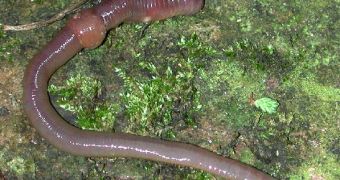Biologists at the University of Minnesota in Duluth say in a new study that they were unable to find any species of native earthwork in the western Great Lakes region, which is where their newest research was focused. All species retrieved from these locations are invasive in nature, the team says.
These creatures, while repulsive to some, fulfill a host of beneficial tasks for soils, to which farmers can attest. Their most important contribution is that they aerate the soils, enabling them to become more fertile, and capable of producing more crops.
They also help the natural break-down processes taking place in compost piles, and make excellent fishing baits. But one of the things not many people know is that these species as well are engaged in a fierce war for survival against invaders.
This is precisely what's going on in the northern parts of the United States, says UMD Natural Resources Research Institute ecologist Cindy Hale, the leader of the newest investigation. She explains that the vast majority of native earthworms were wiped out after the last Ice Age.
All the earthworms currently inhabiting this region were brought in by European settlers centuries ago. The soils in which they arrived were oftentimes used as ballast for trans-oceanic ships, and was unloaded once the vessels got to America.
Another source for the worms are anglers, which have the nasty habit of discarding bait they don't use on the ground. From these two main sources, worms have spread all over the place, beginning to change the face of local forests.
“Earthworms aren't good or bad. Earthworms are just earthworms; they do what earthworms do, and what they do in agricultural systems, we like, and what they do in these native hardwood forests, we don't like. The reason for that is those two ecosystems are completely different,” Hale explains.
The team leader is also the creator of the Great Lakes Worm Watch website, which she and her team developed with funds provided by the US National Science Foundation (NSF). Most often, the worms change ecosystems by feeding on fungi that are required for certain plants to germinate.
“The native forest ecosystems in the western Great Lakes region adapted to earthworm-free conditions for 10,000 years or so, since glacial retreat, and all of the ground rules of these forests are based on the premise that there are no earthworms that rapidly consume, mix and decompose organic material,” Hale adds.
“As a result, all of the nutrient dynamics and organic matter recycling dynamics were controlled by fungi and bacteria; so, (there was) a very slow turnover, that resulted in the accumulation of a forest floor,” she adds.

 14 DAY TRIAL //
14 DAY TRIAL //